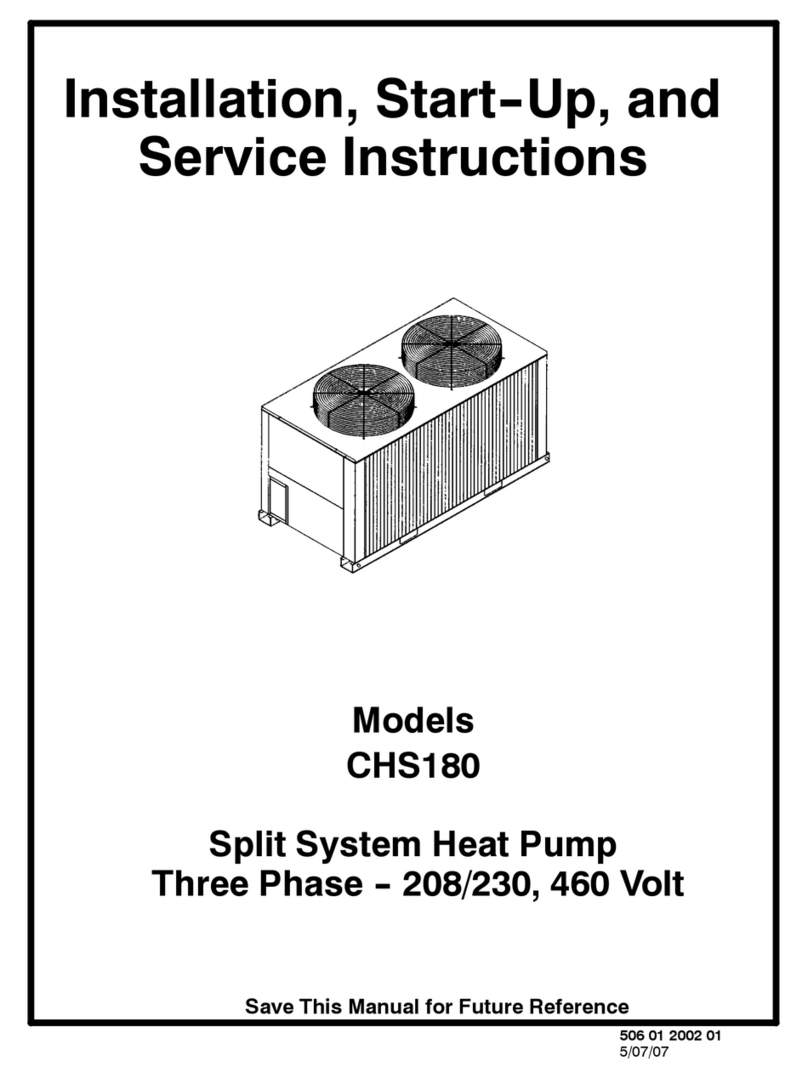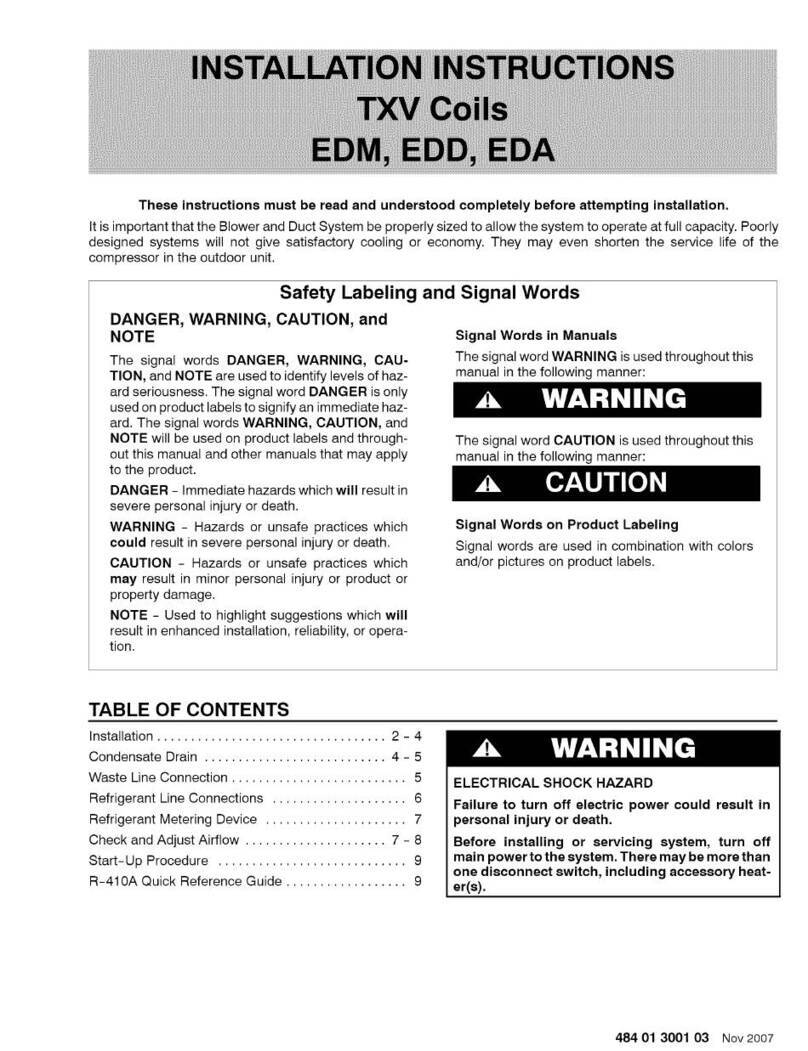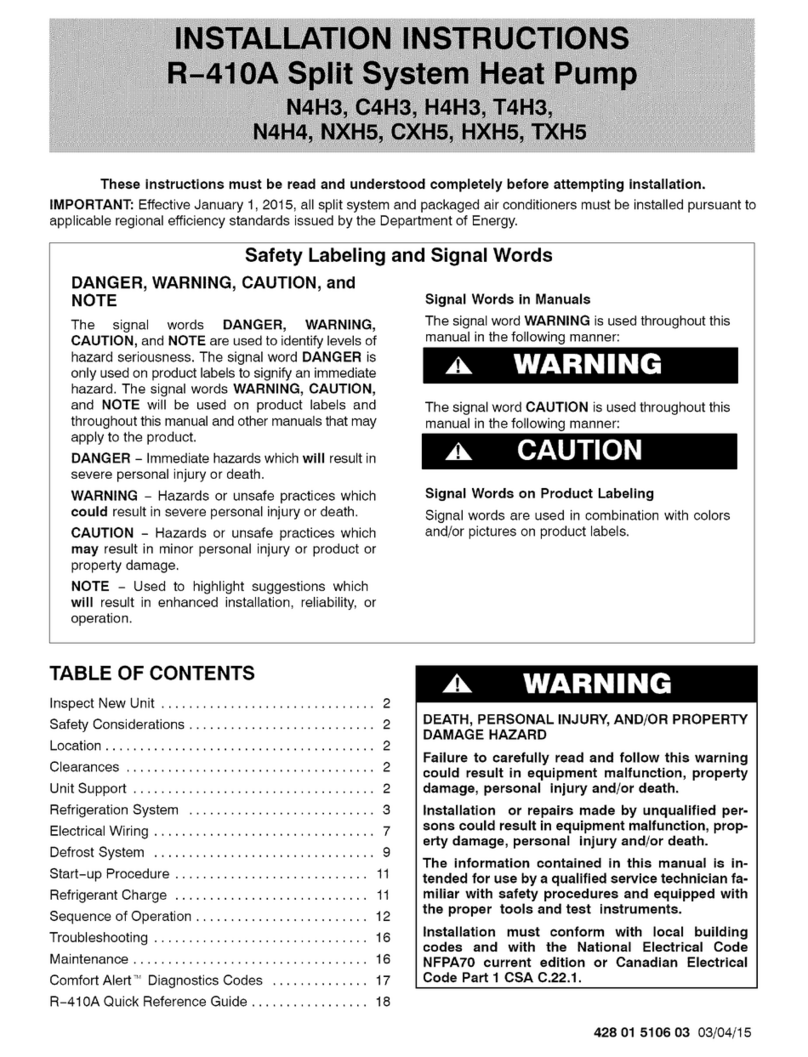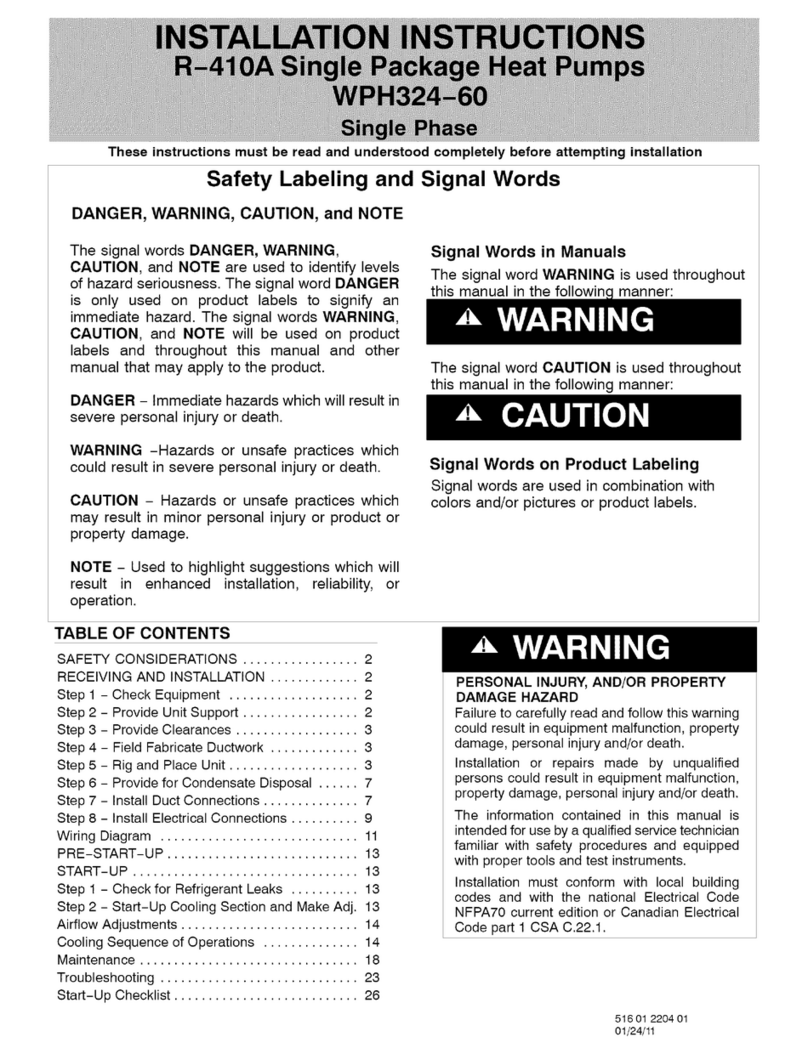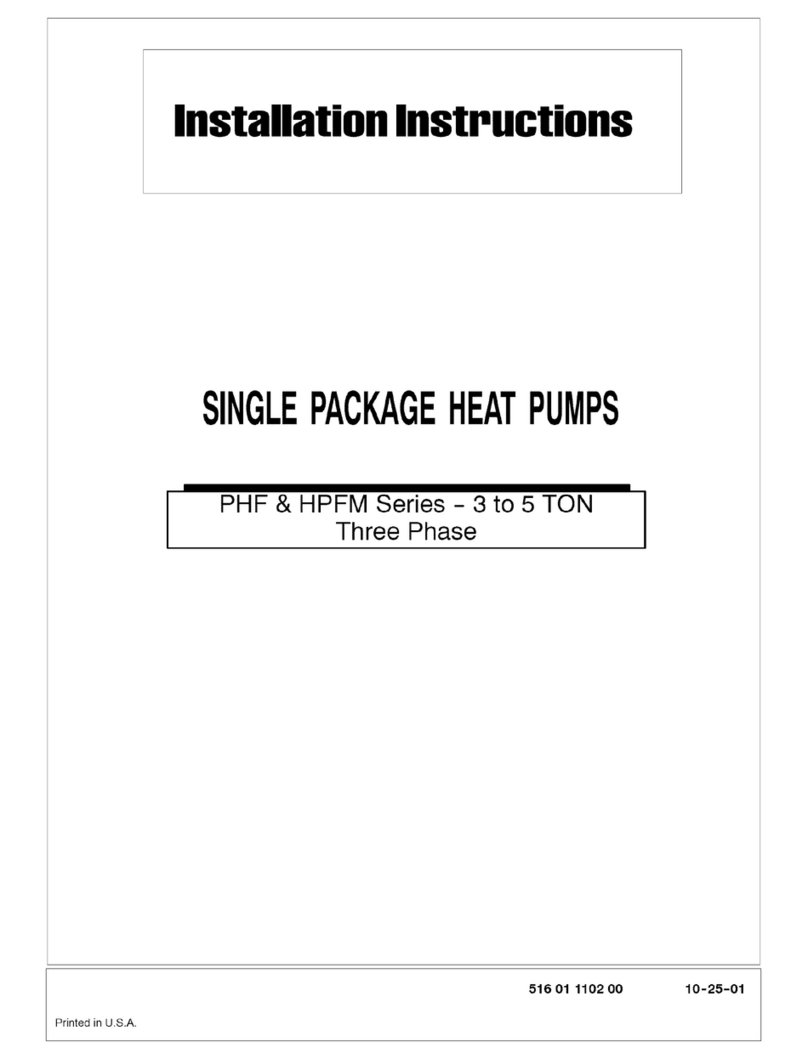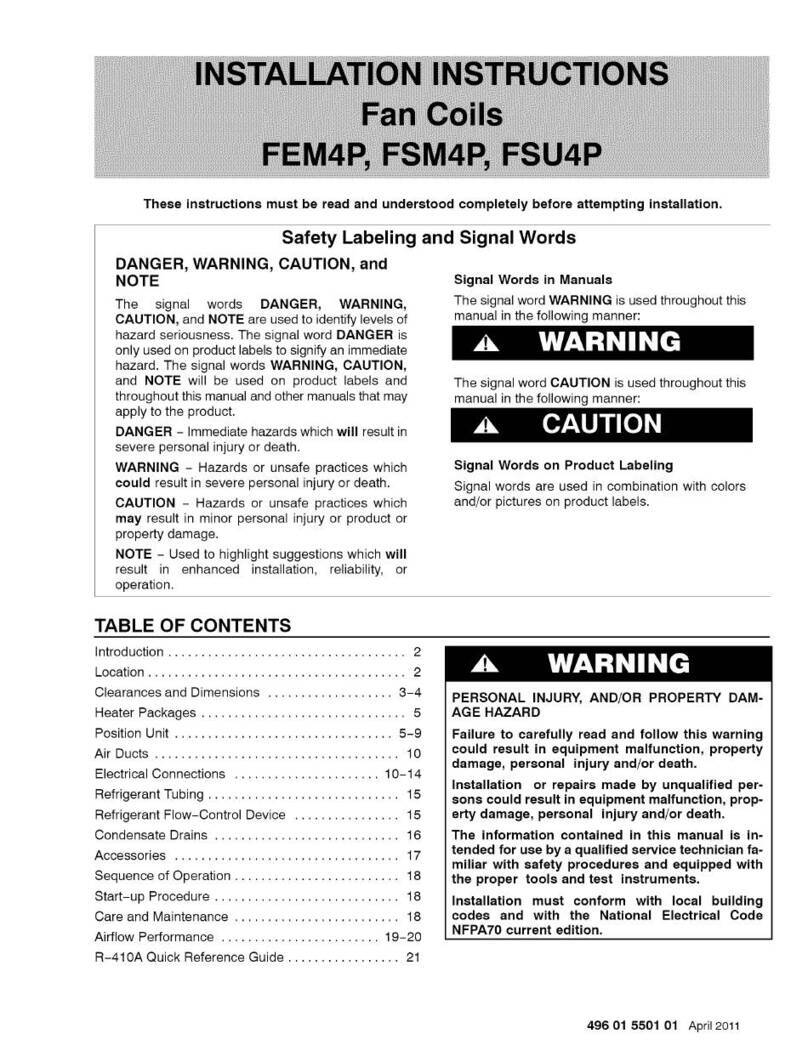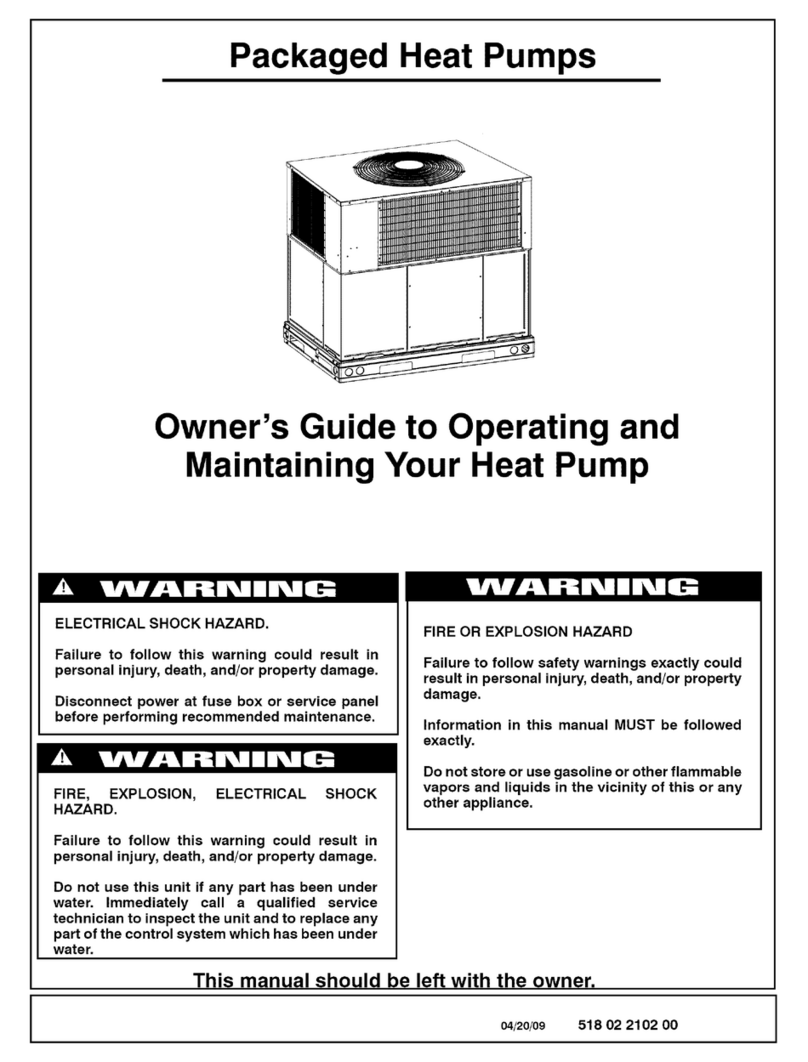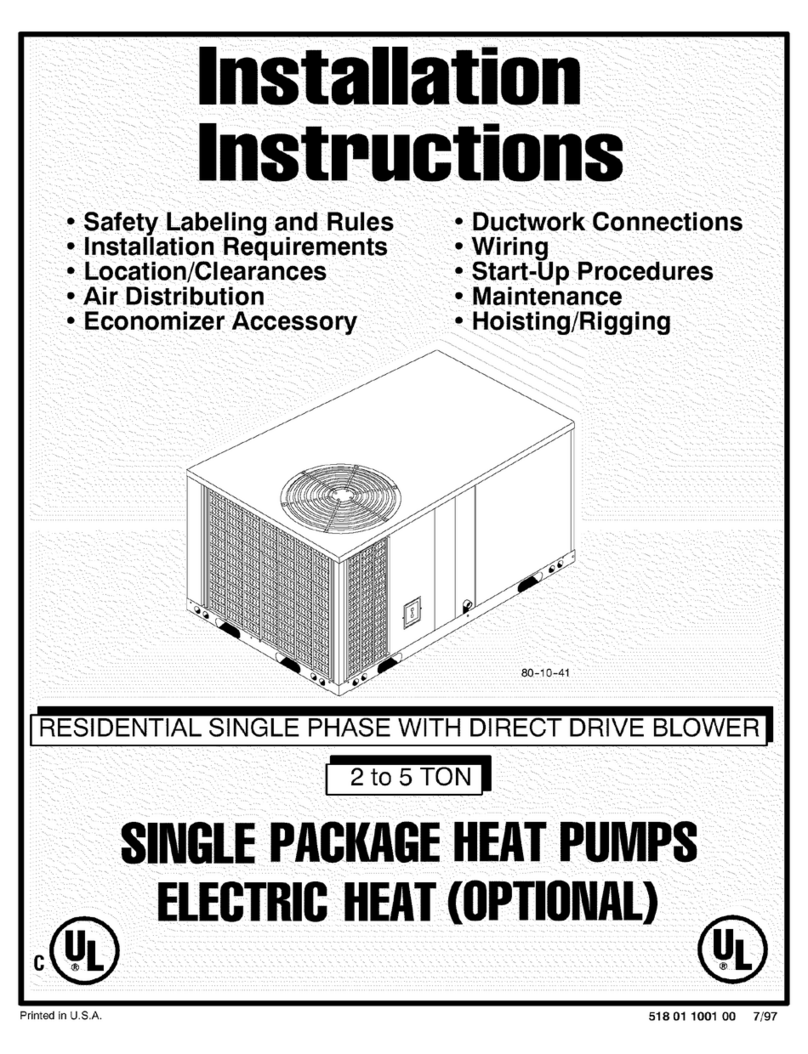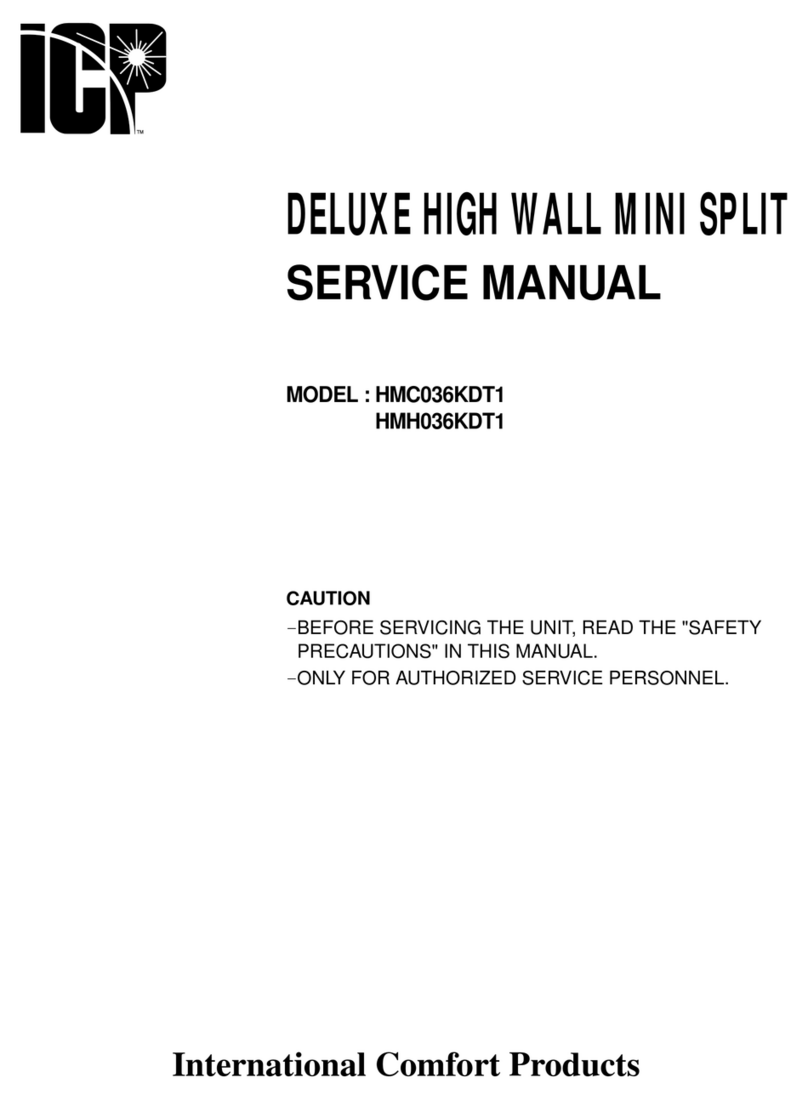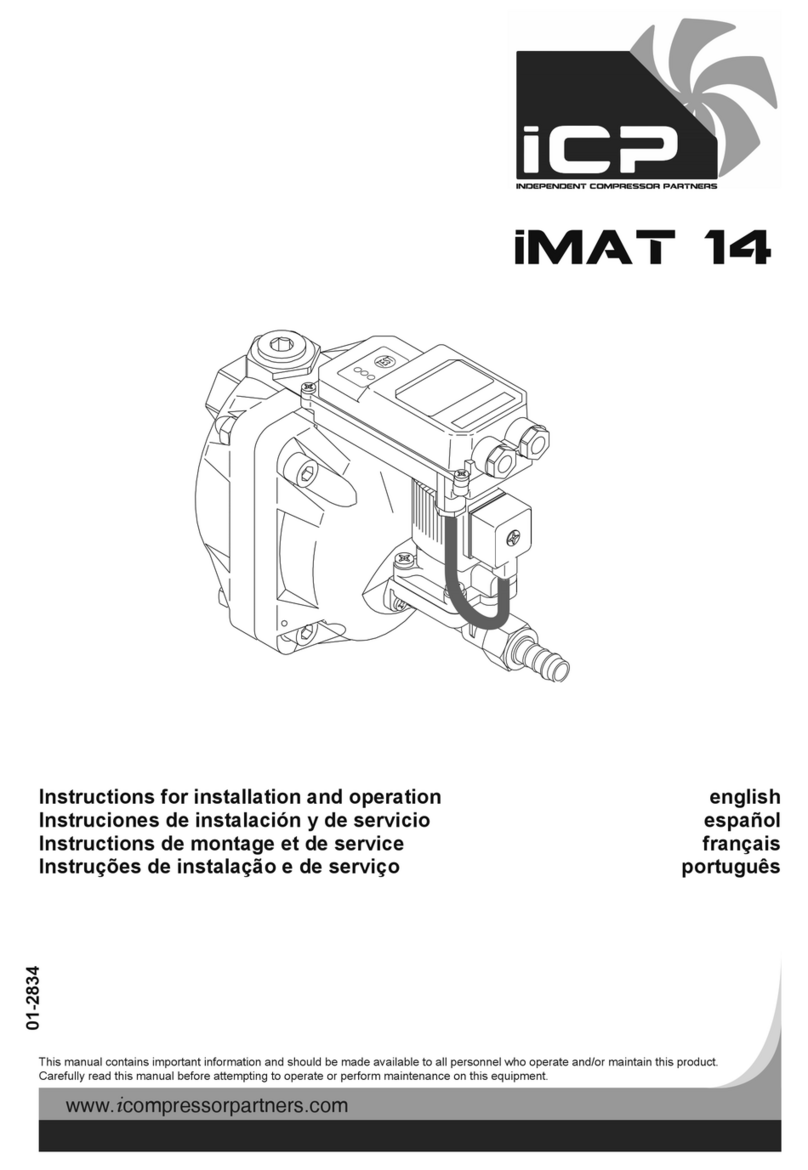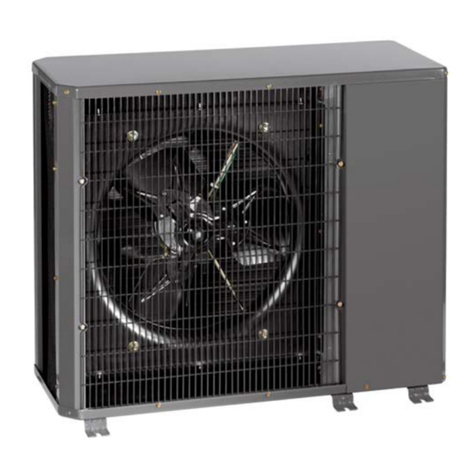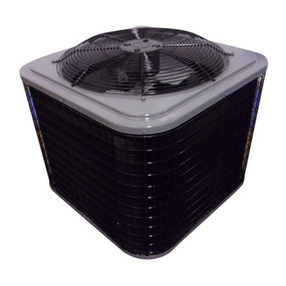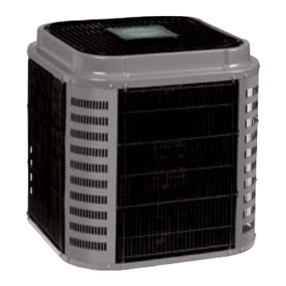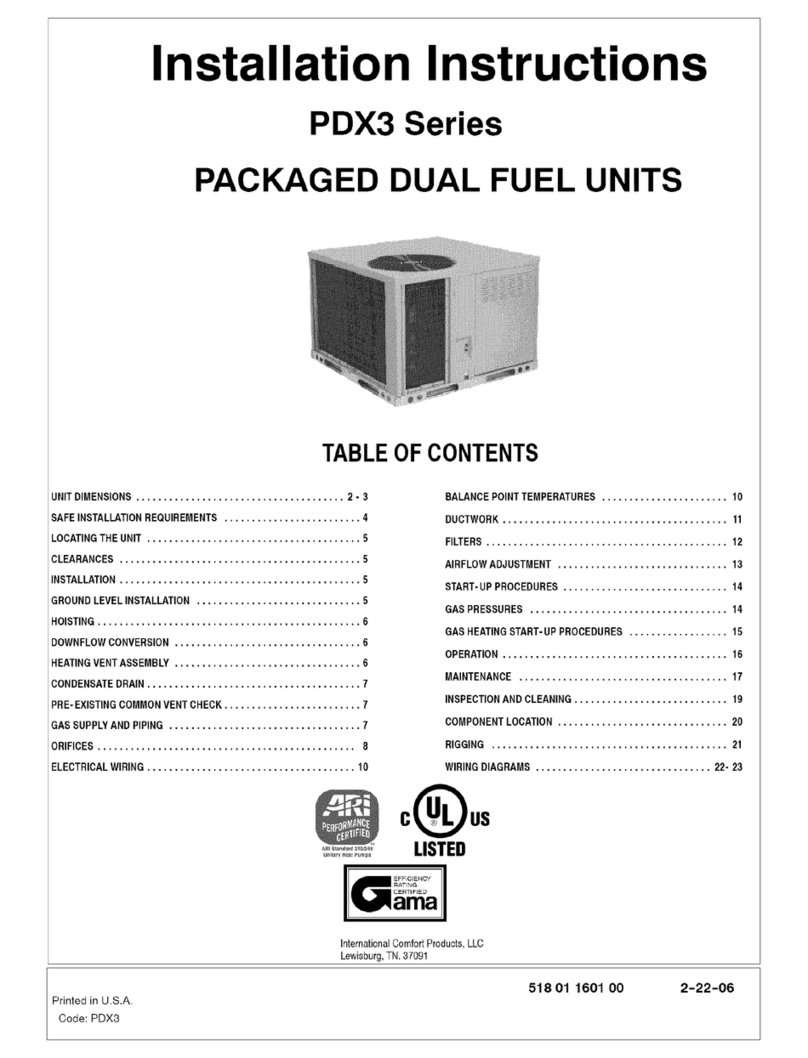cycles.WiththeSYSTEMswitchsetintheAUTOposition,
thecoolingmodeisactivatedwhentheindoortemperature
risesabovethethermostatcoolingtemperaturesetting,or
the heatingmodewill be activatedwhenthe indoor
temperaturedropsbelowthethermostatsettingforthe
heatingcycle.
Dependingon yourwinterheatingneeds,yourhome
comfortsystemmay includesupplementaryelectric
resistanceheat.Ifitdoes,yoursystemwillturnonelectric
resistanceheatonlyasnecessarytomeetyourheating
needsduringdefrostcyclesorwhenoutdoortemperatures
arelow.Intheeventofaheatpumpmalfunction,youcan
usetheEMERGENCYHEATsettingonyourthermostatto
manuallyselectelectricresistanceheat.Heatpump
heatingis deactivatedwhenEMERGENCYHEATis
selected.Becauseelectricresistanceheatconsumes
moreelectricitythan the heatpump'snormalheating
mode,selectingEMERGENCYHEATwillresultinhigher
electricitycosts. If it becomesnecessaryto use
EMERGENCYHEATtoprovideheat,callyourdealerfor
serviceassoonasitispractical.
See your thermostatowner'smanualfor additional
information.
Sequence of Operation
Cooling Mode:
(1)On a call for cooling -PHF324 to PHF342
With a call for cooling (Y), the indoor fan energizes
immediately whereas the contactor energizes after a 5
minute time delay (incase of an initial start up) starting the
compressor and the outdoor fan motor.
(2)When the cooling setpoint has been satisfied
When the cooling demand is met, (Y) de-energizes,
shutting off the compressor, indoor fan and the outdoor
fan.
(1)On a call for cooling -PHF348
This unit utilizes a 2 stage indoor thermostat. With a first
stage call for cooling (Y1), the indoor fan (low stage)
energizes immediately where as the contactor energizes
after a 5 minute time delay (incase of an initial start up)
starting the compressor (low stage) and the outdoor fan
motor. If the low stage operation cannot satisfy the
cooling demand, the second stage cooling (Y2)
energizes switching the compressor into high stage
cooling through energizing an internal solenoid valve
inside the scroll compressor and switching the indoor fan
into high stage.
(2)When the cooling setpoint has been satisfied
When second stage cooling is satisfied, Y2 de-energizes
switching the compressor and the indoor fan into low
stage cooling. When the low stage cooling demand is
met,Y1 de-energizes shutting offthe compressor, indoor
fan and the outdoor fan.
Heating Mode:
(1) On a call for heating -PFM324 toPFM342
With a call for heating (Y), the indoor fan energizes
immediately whereas the contactor energizes after a 5
minute time delay (incase of an initial start up) starting the
compressor and the outdoor fan motor. If (Y) cannot
satisfy the heating demand, the auxiliary or back up heat
(W2) energizes. Incase of staged heating, W3 is
energized if the demand is not met. The highest airflow
selected is run while the electric heat is in operation.
(2)When the heating setpoint has been satisfied
When heating demand is met, W3, W2 and Y sequentially
de-energize shutting off the compressor, indoor fan and
the outdoor fan.
(1)On a call for heating -PFM348
With a first stage call for heating (Y1), the indoor fan (low
stage) energizes immediately whereas the contactor
energizes after a 5 minute time delay (incase of an initial
start up) starting the compressor (low stage) and the
outdoor fan motor. If the low stage operation cannot
satisfy the heating demand, the second stage heating
(Y2) energizes switching the compressor into high stage
heating through energizing an internal solenoid valve
inside the scroll compressor and switching the indoor fan
into high stage. The auxiliary or back up heat is controlled
by a third stage (W2). If the demand is not met, W3 is
energized incase of staged heating.
(2)When the heating setpoint has been satisfied
When heating demand is satisfied, W3, W2 and Y2
sequentially de-energize switching the compressor and
the indoor fan into low stage heating. When the low stage
heating demand is met, Y1 de-energizes shutting offthe
compressor, indoor fan and the outdoor fan.
Cooling Cycle - When operating in the cooling cycle, your
heat pump will run until the indoor temperature is lowered
to the level you have selected. On extremely hot days, your
heat pump will run for longer periods at a time and have
shorter "off" periods than on moderate days.
The following are typical conditions that add extra heat
and/or humidity to your home. Your heat pump will work
longer to keep your home comfortable under these
conditions:
• Entrance doors are frequently opened and closed
• Laundry appliances are being operated
• A shower is running
• More than the usual number of people are present in the
home
• More than the normal number of electric lights are in use
• Drapes are open on the sunny side of the home
Heating Cycle - With the SYSTEM switch of your indoor
thermostat set to the HEAT position, the heat pump will
operate in its heating mode until room temperature is
raised to the level you have selected. Of course, the
heating unit will have to operate for longer periods to
maintain a comfortable environment on colder days and
nights than on moderate ones.
Defrost Cycle - When your heat pump is providing heat to
your home and the outdoor temperature drops below 45
degrees Fahrenheit, moisture may begin to freeze on the
surface of the outdoor coil. If allowed to build up, this ice
would impede airflow across the coil and reduce the
amount of heat absorbed from the outside air. So, to
maintain energy-efficient operation, your heat pump has
an automatic defrost cycle.
The defrost cycle starts at a preset time interval of 30, 60,
90 or 120 minutes. Defrost will start atthe preset time only if
the ice is sufficient to interfere with normal heating
operation.


